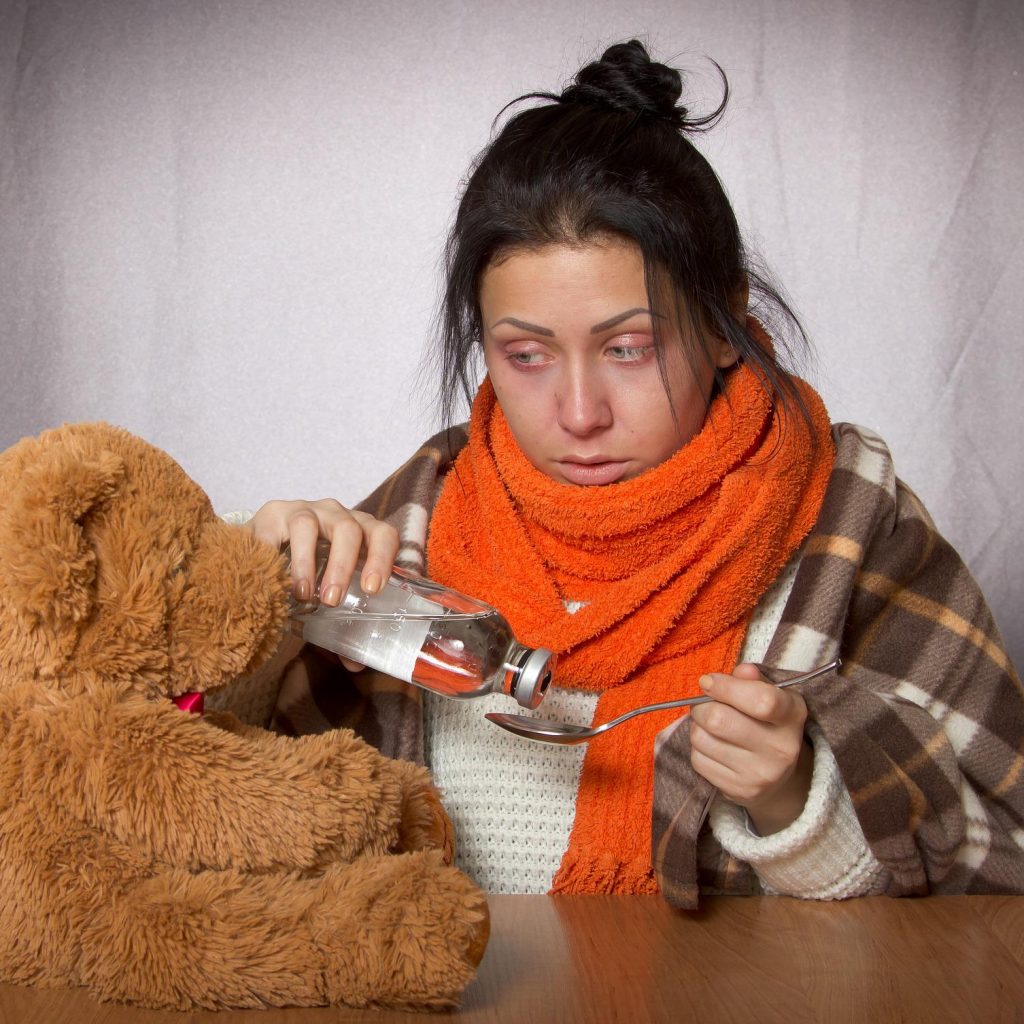Fungal Sinus Infection also known as Fungal sinusitis, is a type of sinus infection caused by an overgrowth of fungus in the sinuses. Fungal sinus infections come in a variety of forms. Some types can lead to serious health issues and even death. People who have a situation that weakens one‘s immune system are at a higher risk of fungal infections complications Therefore Treatments include surgical procedures and antifungal medicines.
What Exactly Is Fungal Sinusitis?
Sinusitis, often known as a contagious sinus infection, is mostly caused by a virus, however bacteria can occasionally play a role. A fungus causes fungal sinusitis, which is a rare infection caused only by a fungus. Despite the fact that the immune system can combat many yeast infections, fungal sinusitis can be lethal, particularly in persons who have underlying health problems or who are immunocompromised.
What exactly is a fungus?
Fungi are living organisms. Because it cannot produce its food, it obtains nutrients from decaying matter in the soil, water, or plants in which it lives. Fungi are found in the air, on surfaces, and in people and animals.
Scientists classify fungi. Some fungi are visible (such as mushrooms), while others are so microscopic that they can only be seen under a microscope. Among them include mold, yeasts, and mildew.
What exactly are sinuses?
The sinuses are hollow areas (cavities) within your skull that are connected. They run across your brow, behind your nose, among your eyes, and beneath your cheekbones. The mucus layer on the sinus walls traps bacteria and wants to keep the air inside moist.
Sinuses need to be drained on a regular basis. The sinuses do not function properly when there is a blockage or inflammation.
What are the different types of fungal sinusitis?
Fungal sinus infection contagious is classified as invasive or noninvasive by providers. Invasive infectious diseases can spread to other parts of the body, including the eyes and brain. The more popular method of sinus infection, noninvasive sinusitis, only affects the nose and sinuses.
Noninvasive fungal sinusitis is classified as follows:
1. Fungal rhinosinusitis caused by allergies:
In the sinuses, it is the most common kind of fungus. An allergic reaction to fungi in the nose causes fungal rhinosinusitis. If left untreated, the sinuses can become clogged with runny mucus and nasal polyps can shape. People who have asthma or allergic rhinitis (hay fever) are at a higher risk of developing this condition.
2. Mycetoma (fungal ball):
Fungi accumulate in the sinuses, forming a clump or ball. The fungal infections ball can grow in size and obstruct the sinuses. Providers utilize surgery to remove fungus balls from the nasal passages and clean them out.
3. Fungal sinusitis caused by saprophytes:
This sort of disease has no effect on the nose tissue. Fungus instead grows on mucus crusts inside the nose. When service providers eliminate the crusts, they also remove the fungus.
Fungal Sinus Infection: Symptoms and Causes

Invasive fungal sinusitis is classified into two types. Both are potentially fatal. Acute invasive fungal sinusitis is a medical emergency that spreads quickly. Chronic invasive fungal sinusitis spreads more slowly than acute fungal sinusitis and is usually misdiagnosed as a sinus infection.
Although symptoms differ depending on the type of fungal sinusitis, the description below includes common symptoms and the cause of the disease.
Signs and Symptoms of Fungal Sinus Infection
People suffering from acute invasive fungal sinusitis are typically very ill and exhibit all or some of the following sinusitis symptoms:
- Mental state alterations – A change in mental health status refers to broad changes in brain function such as misunderstanding, memory loss, loss of alertness, and disorientation.
- Visionary shifts – increasing the number of eyesight.
- Nasal congestion and discharge – When the cells lining the nose swell, it causes a stuffy or congested nose.
- Fever – a temporary rise in your body temp, usually caused by illness
Chronic invasive fungal sinusitis symptoms include:
- Drainage and congestion
- Facial pain and pressure, similar to a long-term sinus infection
- Fatigue – a general sense of exhaustion or a lack of energy
- Sense of smell or taste loss – When you end up losing your senses of taste and smell
- Nose congestion – Infections including such colds, flu, and sinusitis, as well as allergies
- Nosebleed – blood loss from the nose-lining tissue.
- Face and sinus pain or pressure – When you have a cold or allergies, you are more likely to get sinus infections and headaches.
What Causes Fungal Sinus Infection?
You get fungal sinusitis when you breathe fungi into your nasal passages, sinuses, and lungs. Aspergillus, a commonly experienced mold, causes the vast bulk of fungal sinusitis cases.
A variety of fungi can induce a sinus infection, which is contagious. Mold or yeast are the most common causes of fungal sinus infections. When someone breathes in tiny fungi, they can enter the sinuses.
At any time, the fungus can seen on or inside the body in a variety of forms. In conclusion they are typically only hazardous to humans who have a compromised immune system.
Aspergillus mold is unavoidable. It can be found on plants, trees, and grain crops, as well as in compost and rotting leaves.
For immunocompetent individuals, daily exposure to Aspergillus is rarely an issue. Inhaling mold spores causes immune system cells to surround and destroy them. People with a weakened immune system as a result of illness or immunosuppressive medications, on the other hand, have very few infection-fighting cells. As a result, Aspergillus can take hold and infiltrate the lungs and, in severe cases, other areas of the body.
Diagnosis and Testing of Fungal Sinus Infection
Your healthcare provider will investigate your neck and head using a nasal endoscope webcam that looks into the nasal cavity and space that surrounds the sinuses to determine the presence of fungal sinusitis.
While CT scans are used to determine the extent of invasion in the majority of cases, MRI scans are favored in IFS instances because they can detect soft-tissue growth.
A sample of mucus or pus from the nose can also be taken and examined for the presence of fungi in a laboratory. In NFS situations where the fungi do not infiltrate the bloodstream, this method is usually used.
Management and Treatment of Fungal Sinus Infection

The type of infection you have and whether you have an underpinning health condition and are immunocompromised all influence how you are treated for fungal sinusitis. Anti fungal medications, sinus surgical procedures, a nasal wash, and corticosteroid medicines are common sinusitis treatments.
Fungal Sinus Infection Treatment
Antibiotics
Bacterial sinus infections are frequently treated with antibiotics. Depending on the type of antibiotic, antibiotics are typically taken for 3 to 28 days. People with chronic or severe cases may require longer treatments because the sinuses are deep in the bones, and the bloodstream is limited.
Antibiotic overuse and abuse have resulted in a significant increase in antibiotic resistance. As a result, patients with sinus symptomatology should think about taking an antibiotic only if their symptoms, including discolored nasal discharge, persist for more than 7-10 days.
Antibiotics aid in eliminating a sinus infection by trying to attack the bacteria that can cause it, but they do little to alleviate the symptoms until the drugs take effect. Some over-the-counter medicines can provide temporary relief.
Spray nasal decongestants
When used for not over three to four days, topical nasal prescription medications can be beneficial. But these medications constrict swollen nasal passages, allowing sinus drainage to flow more freely. Overuse of topical nasal sprays can lead to the rebound, a dependent affliction in which the nasal passages swell shut.
Antihistamines and nasal decongestants
Antihistamines inhibit skin inflammation by an allergic reaction to aid in the treatment of allergy symptoms such as swollen nasal and sinus passages.
Combination over-the-counter drugs should be taken with considerable caution. Some of these medications contain drying agents that can cause mucus to thicken. Only use them if your allergist has prescribed them.
Corticosteroids for the nose
These prescription nasal sprays work to prevent and reverse inflammation and swelling in the nasal cavity and sinus entry points, addressing the most common issue associated with a sinus infection. Nasal corticosteroid sprays are also helpful in shrinking and preventing the recurrence of nasal polyps.
However these sprays do not absorb the required amount of drug into the bloodstream and can be used for long periods of time without causing “addiction.”
Nasal washes with saline
Nasal rinses can aid in the removal of thickened saliva from the nasal passages.
Surgery
Surgery may be an option as a last resort if drug therapies have failed. An otolaryngologist is usually the one who performs it. The most common surgical target is anatomical defects.
Your surgeon can repair bone defects that separate the nasal cavity, remove nasal polyps, and open closed verses. Sinus surgery can be done under local or general anaesthesia, and patients are usually able to go home the same day.
Summary
Fungal sinusitis refers to a group of infections that cause sinus inflammation. It happens when you inhale microscopic fungi found in warm, damp environments. Fungal sinusitis, in particular, can be fatal, especially in those who have underlying health issues and are immunocompromised.




